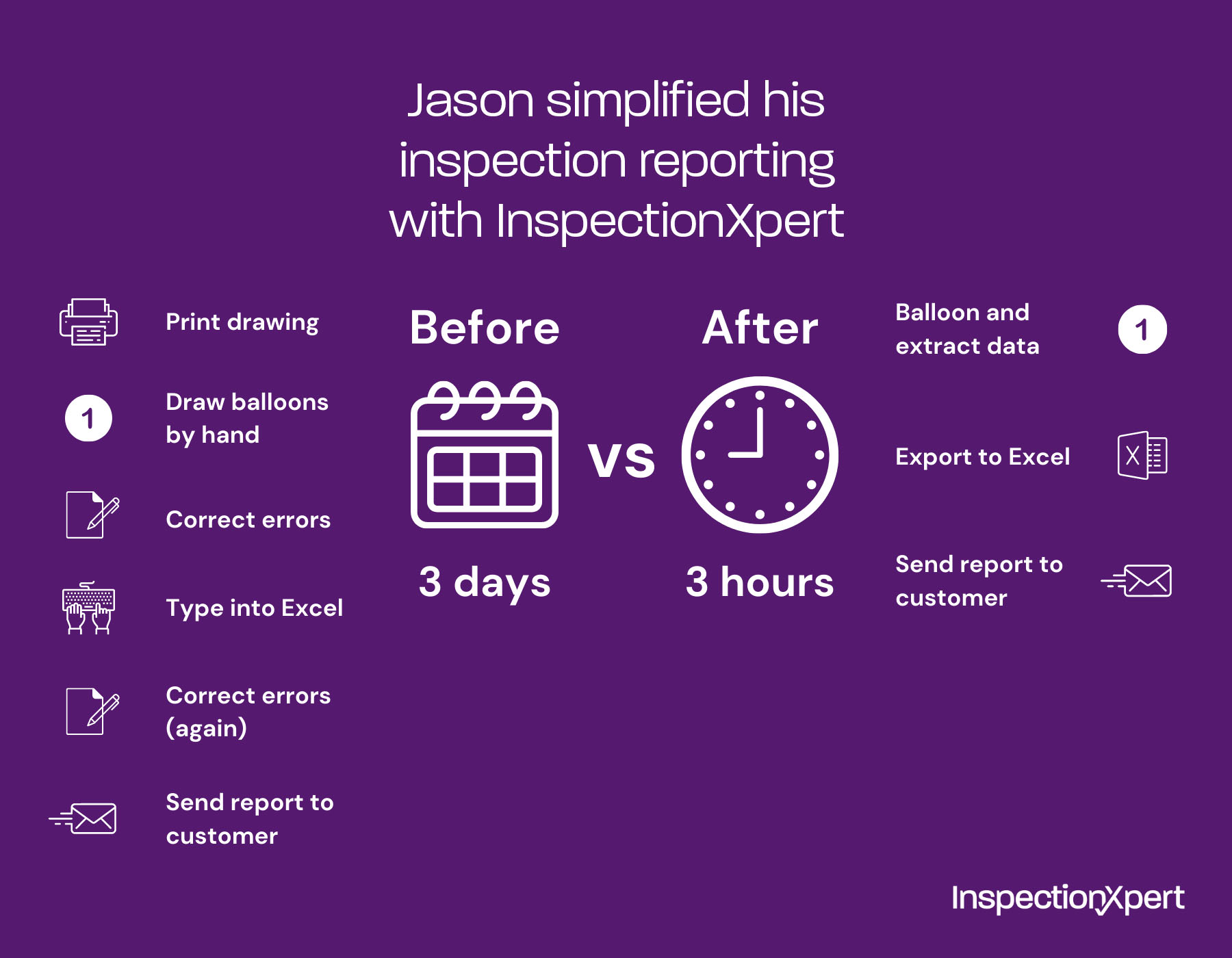
This is a guest post by Jason van de Laar, C.E.T. from JTL Integrated Machine, an InspectionXpert customer.
In our quality control department, we are constantly improving our dimensional inspection methods and the technology we use. Every inspection is an opportunity to improve the speed and accuracy of inspecting and our overall efficiency of the inspection process.
The challenge is achieving this without creating frustration. At times, technology that is intended to improve workflow actually becomes a negative driver and decreases workflow because the employee is not ready to adopt the technology. This was a gradual and painful learning process in our shop. We knew there must be a way to solve this problem by improving the way we plan and execute inspection processes and how we report on the success of those inspections to our customers. And although we wanted to achieve a perfect process, there is rarely a solution that will solve every problem at once. The best way to start was to start imperfectly.
When I first started working for JTL Integrated Machine over eight years ago, we were ballooning drawings by hand. In Excel, we would manually enter the balloon numbers with the dimensions, tolerances, and the measurement tool being used. Then the customer would call up and revise the drawing and we would have to start all over again. What a mess it all was! Printing out a paper drawing and a paper report was a waste of paper, and we had to go back and forth between these two documents, plus the part that we were inspecting. All the shuffling killed any workflow rhythm. When I think about how busy we were then, and how much orders have increased from our customers, it’s insane that we were preparing documents that way.
We quickly learned from our past mistakes and gradually made improvements. First, we started experimenting with PDF software and entering the balloon numbers using text boxes. We got around the drawing revision dilemma for a little while by exporting all of the text boxes to a comment file that could be brought into another drawing file. Unfortunately, if the revision was significant, it made this process messy because there would still be many balloons to reposition and we’d have to add more balloons in between existing ones. And of course, we still had to boot up Excel to manually enter in all the drawing data. It was definitely an incremental improvement at best.
The big breakthrough came when we started using InspectionXpert. This really changed the game for us. We were no longer chained to our desks for days on end creating reports; we could now get the reports done quickly and focus on what really mattered to our customers: ensuring quality parts went out the door.
Before we had access to InspectionXpert, our process was drastically different:
| Process Before InspectionXpert | Process With InspectionXpert |
| 1. Print customer drawing and specifications/tolerances | 1. Import drawing into InspectionXpert |
| 2. Hand balloon drawing | 2. Set default tolerances |
| 3. Review for errors | 3. Balloon drawing in InspectionXpert |
| 4. Correct errors, often resulting in balloons out of order | 4. Review for errors, correcting the ballooned part drawing, features, and tolerances all in one step |
| 5. Transfer balloons and dimensions into Excel, typing in tolerances | 5. Export ballooned part drawing and Excel report in one package |
| 6. Review for errors | 6. Send report to the customer |
| 7. Correct errors in Excel, and often correcting errors in ballooned drawing again | |
| 8. Print Excel report and ballooned part drawing | |
| 9. Send report to the customer |
As you can see, we simplified our process greatly. We were able to seamlessly import our customers’ drawings and quickly capture the drawing data. Creating FAI reports went from taking days to taking hours or less. The workflow improved because all our customers’ data lived in the InspectionXpert project file, and we could see the drawing and the measurement data at the same time without having to switch between applications.
By taking the first step on the long road of streamlining our ballooning, reporting, and inspections, we were able to focus on more important work for our customers and continue building on our process improvements.
See if InspectionXpert can help you cut down your inspection planning and reporting time. Get free access to all the features for 14 days, no strings attached.
Copyright 2025 InspectionXpert Corporation, is a wholly owned subsidiary of Ideagen Inc, All Rights Reserved